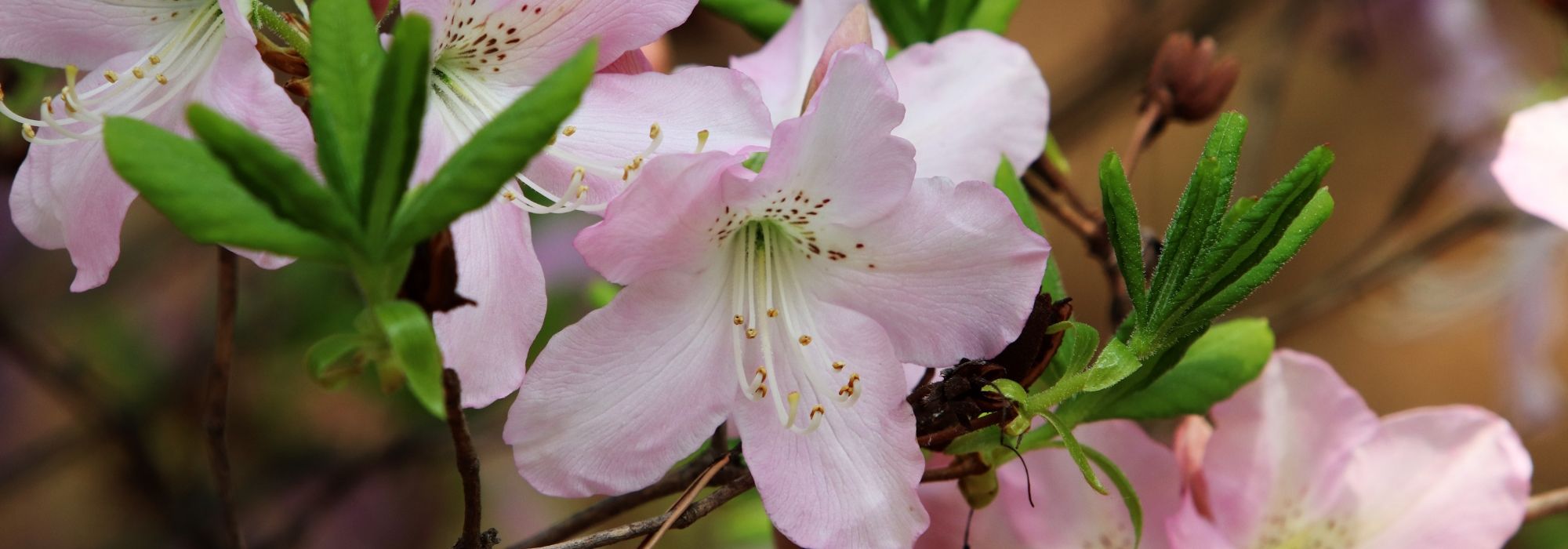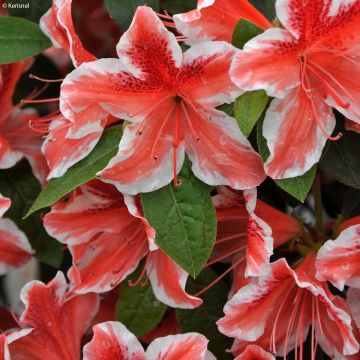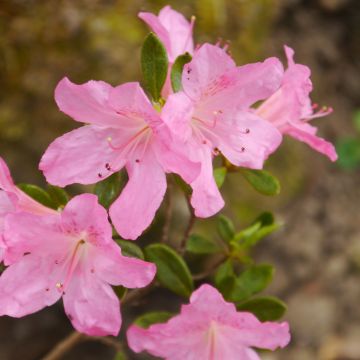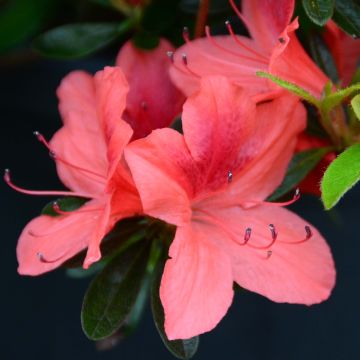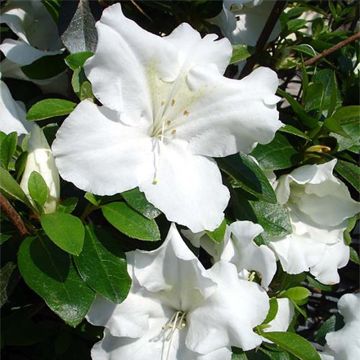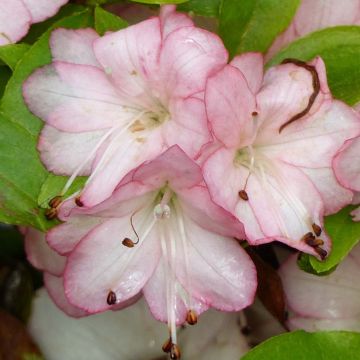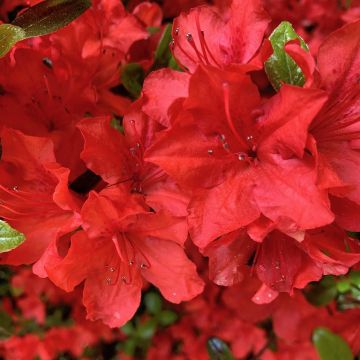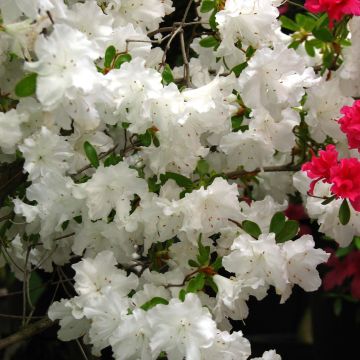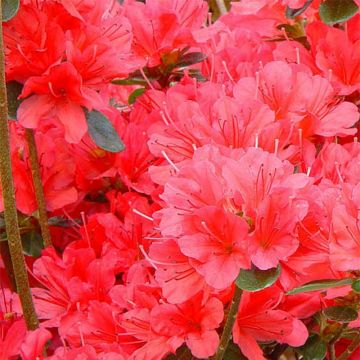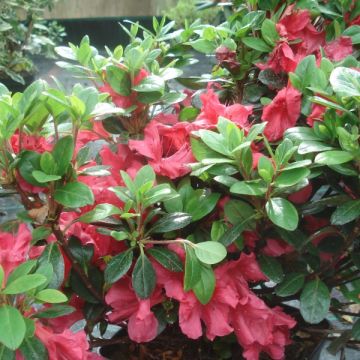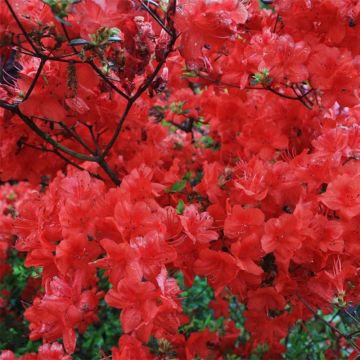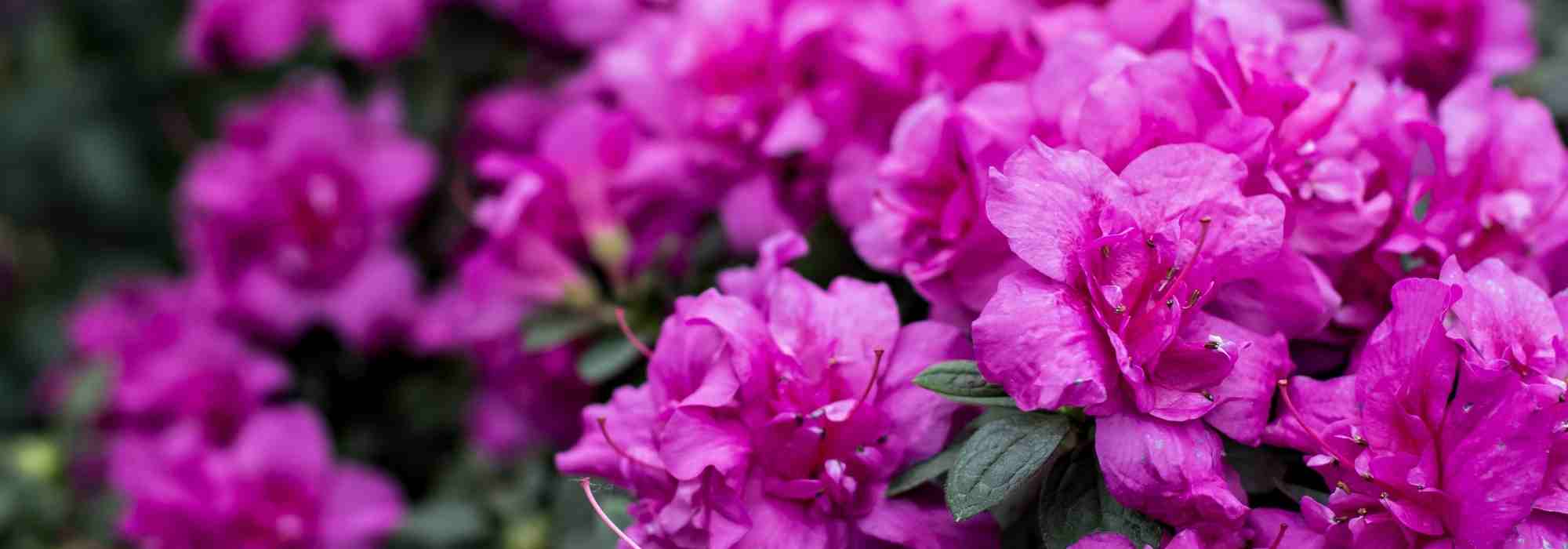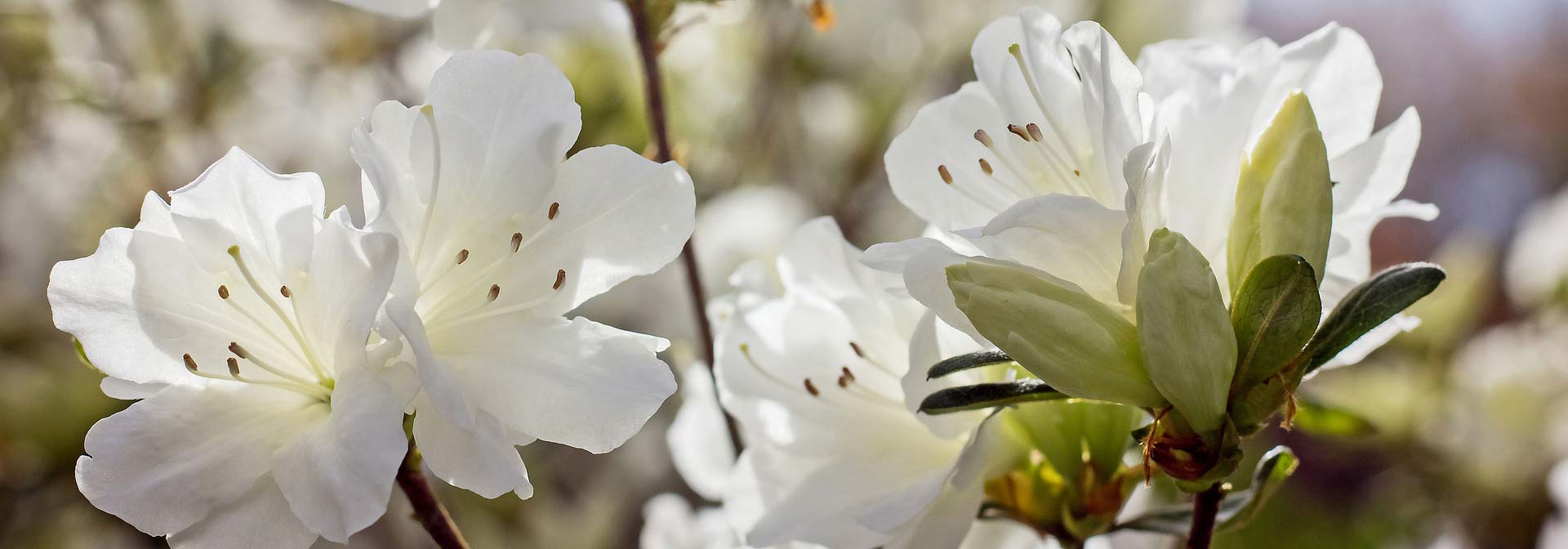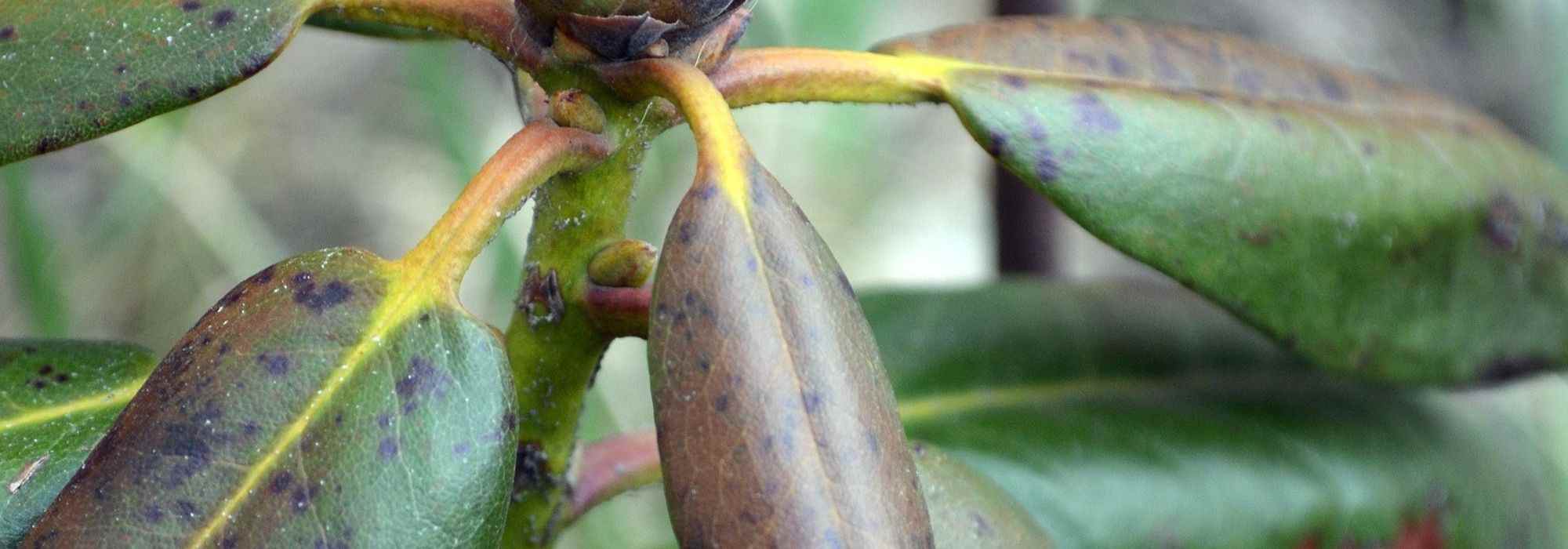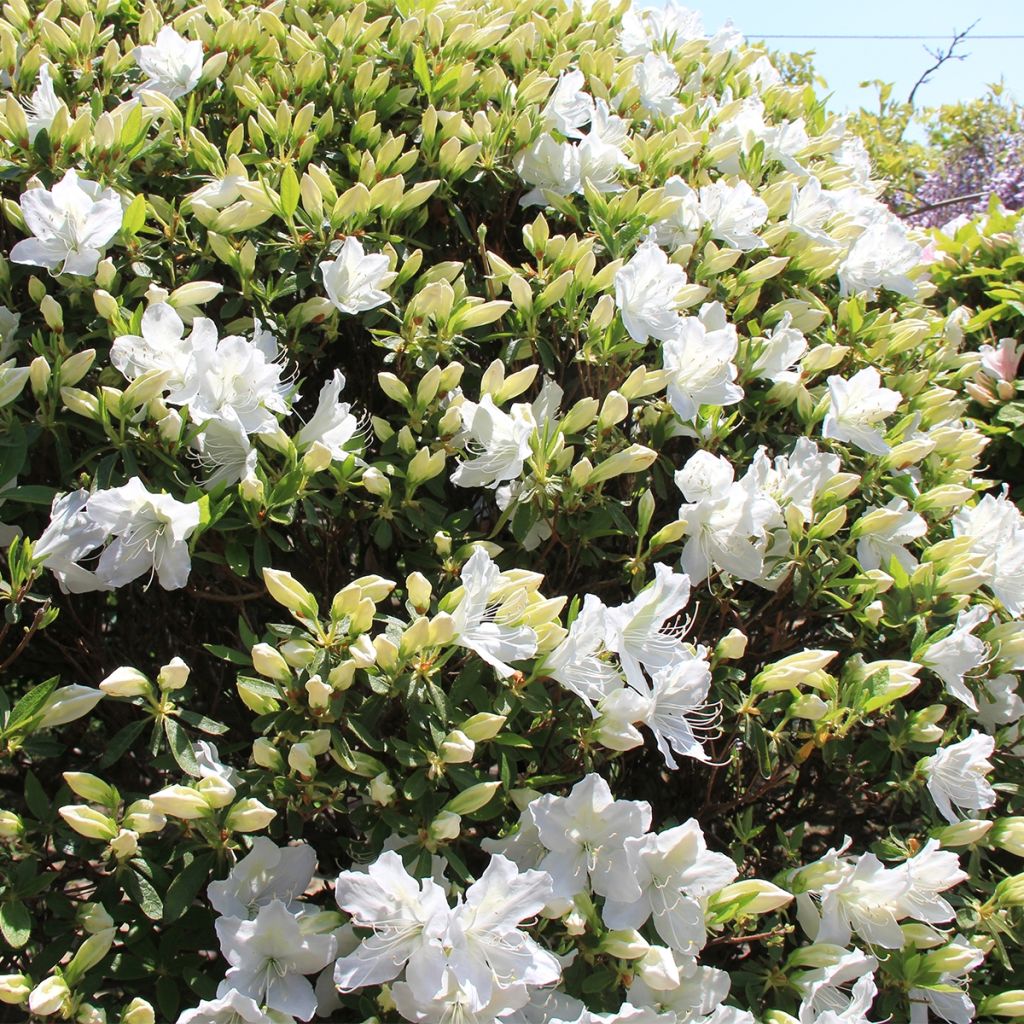

Azalea japonica Luzi
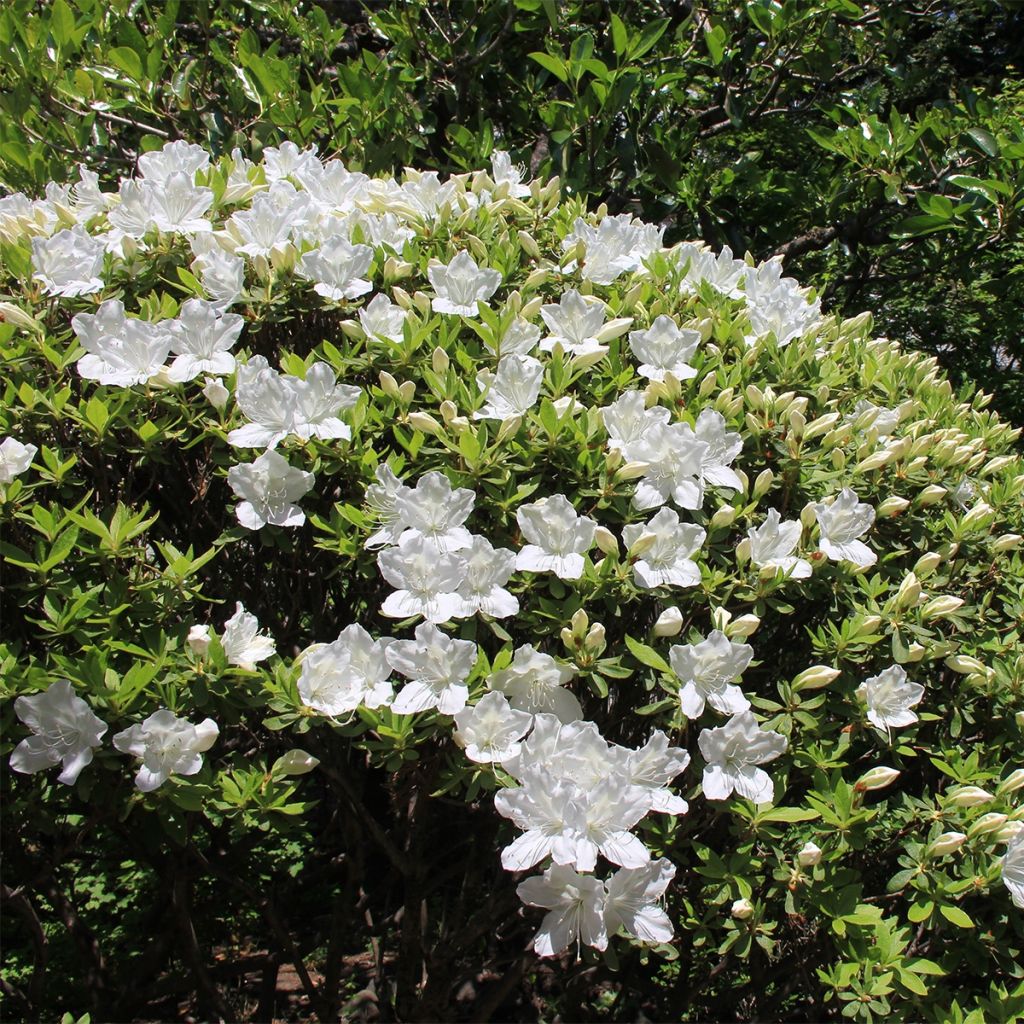

Azalea japonica Luzi
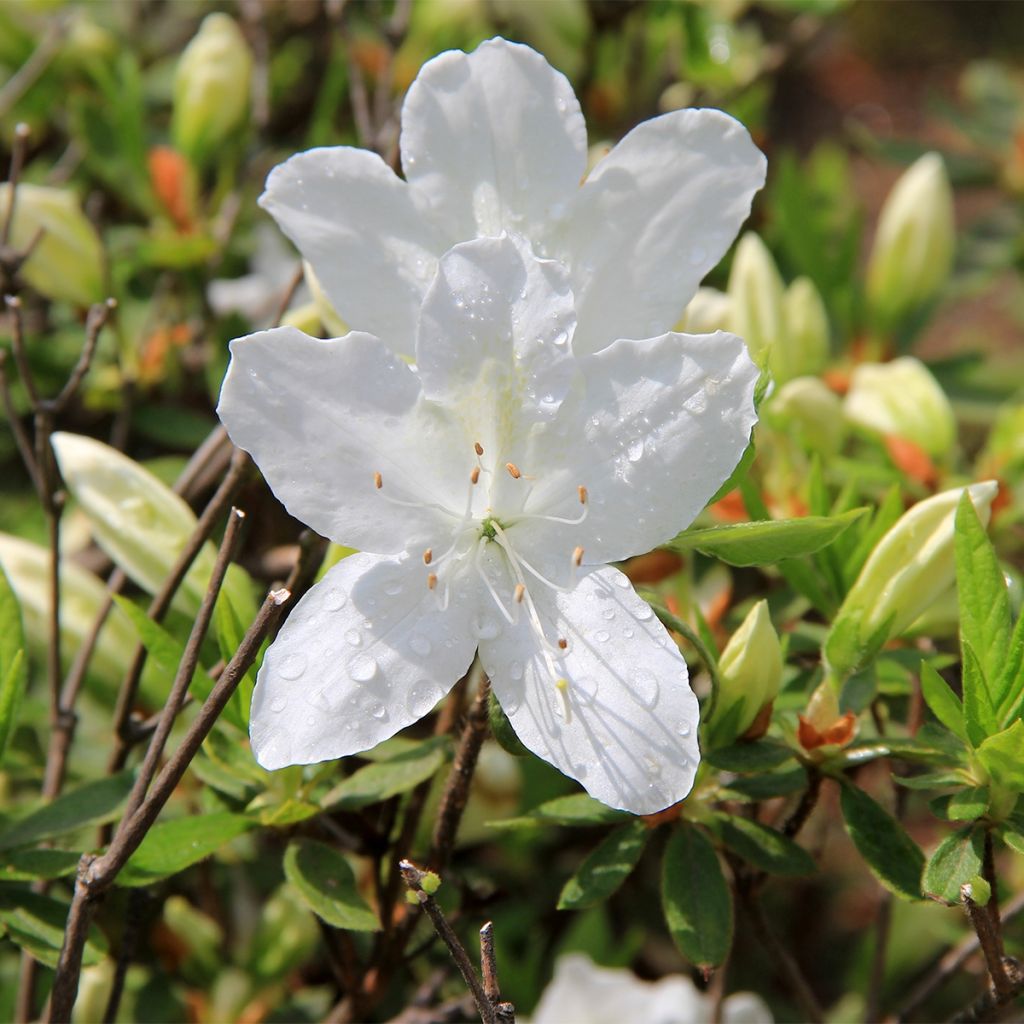

Azalea japonica Luzi
Azalea japonica Luzi
Rhododendron (Azalea) Luzi
Japanese Azalea
Special offer!
Receive a €20 voucher for any order over €90 (excluding delivery costs, credit notes, and plastic-free options)!
1- Add your favorite plants to your cart.
2- Once you have reached €90, confirm your order (you can even choose the delivery date!).
3- As soon as your order is shipped, you will receive an email containing your voucher code, valid for 3 months (90 days).
Your voucher is unique and can only be used once, for any order with a minimum value of €20, excluding delivery costs.
Can be combined with other current offers, non-divisible and non-refundable.
Home or relay delivery (depending on size and destination)
Schedule delivery date,
and select date in basket
This plant carries a 24 months recovery warranty
More information
We guarantee the quality of our plants for a full growing cycle, and will replace at our expense any plant that fails to recover under normal climatic and planting conditions.
Would this plant suit my garden?
Set up your Plantfit profile →
Description
The Japanese Azalea 'Luzi' (now classified as Rhododendron) is a charming little, compact shrub, forming an evergreen ball with small, dark green, pointed leaves. The blossom in spring is magical, completely covering the shrub in clusters of white flowers. This ericaceous plant does not tolerate alkaline soils or drought. It will do best in a mildly sunny or semi-shaded position, in acid soil that remains slightly moist. Very hardy, this small Rhododendron is an excellent choice for a small garden, which it brightens up with its luminous blooms.
Rhododendrons are members of the Ericaceae family, which includes many ornamental genera (Kalmia, Leucothoe, Erica, Calluna, Oxydendrum, Gaultheria, Pieris...) as well as a few small fruits (Vaccinium: blueberry, Arbutus: strawberry tree, Arctostaphyllos uva-ursi: bearberry). The Rhododendron genus has numerous species (about a thousand). It includes evergreen and deciduous varieties, from miniature bushes to 15m (49 ft 2 in) trees (in their natural habitat, or the magnificent specimens that can be admired in parks), with flowers covering almost the entire colour palette thanks to the many horticultural varieties available on the market.
The 'Luzi Rhododendron' is a hybrid commonly classified as Japanese Azalea (a purely horticultural name, as Azaleas are, botanically speaking, Rhododendrons). It was selected by the German breeder Gergard Mittendorf, a specialist in the Rhododendron genus, who introduced it to the market in 1975. This small shrub will reach a height of about 80 cm (31.5 in) and a spread of 90 cm (35.4 in) in 10 years, and will not grow much more than that. Its relatively dark green, evergreen leaves are quite small and pointed at the tip. They provide a dark background to highlight the immaculate white blooms, flowering from mid-May to mid-June, depending on the year. These bell-shaped flowers, measuring 5 to 7 cm (2 to 2.8 in) in diameter, are grouped in clusters, and their joyful profusion gives the shrub the look of a bridal bouquet! Very hardy, this variety can withstand temperatures as low as -20°C (-4 °F).
The 'Luzi Rhododendron' is ideal for edging an ericaceous bed. You can combine it with many other flowering plants and by choosing staggered flowering periods, you can enjoy them all year round! Have fun mixing winter blooms, like those of the astonishing James Roof Garrya elliptica with its myriad of long, pendulos catkins that exude a romantic charm. Keeping with the poetic theme, the rare Lipstick Camellia, with its red anemone-shaped flowers from January to March, will be a perfect companion. The pale yellow flowers of the Corylopsis pauciflora, blooming on the still bare wood of the shrub in March-April or the surprising purple of the large cup-shaped flowers of the magnificent Magnolia Black Tulip will precede the flowering of our delightful little white Rhododendron.
Azalea japonica Luzi in pictures
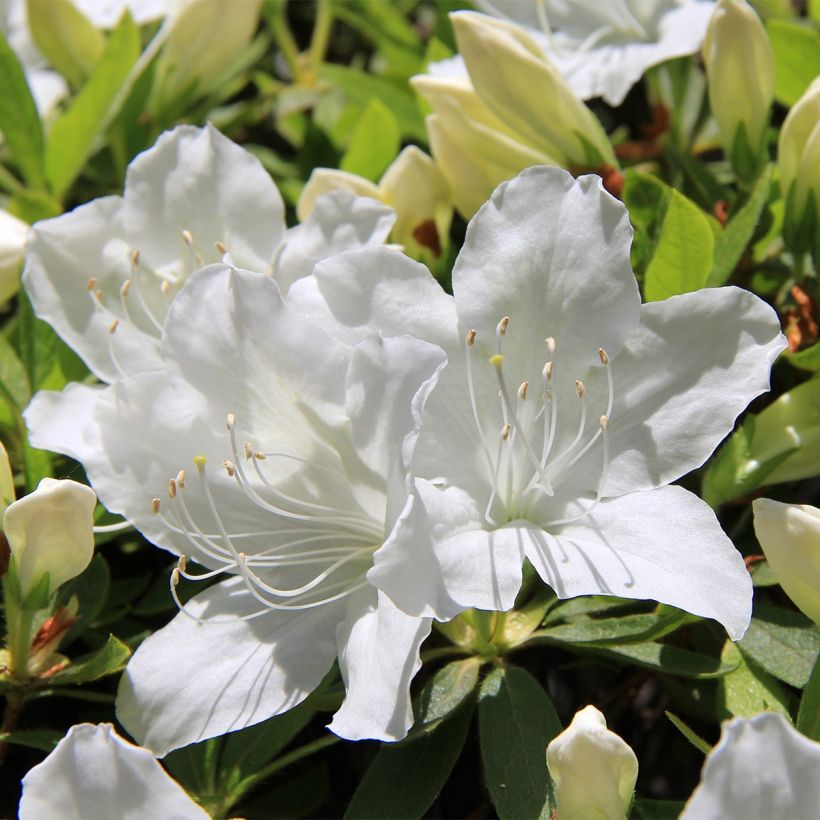

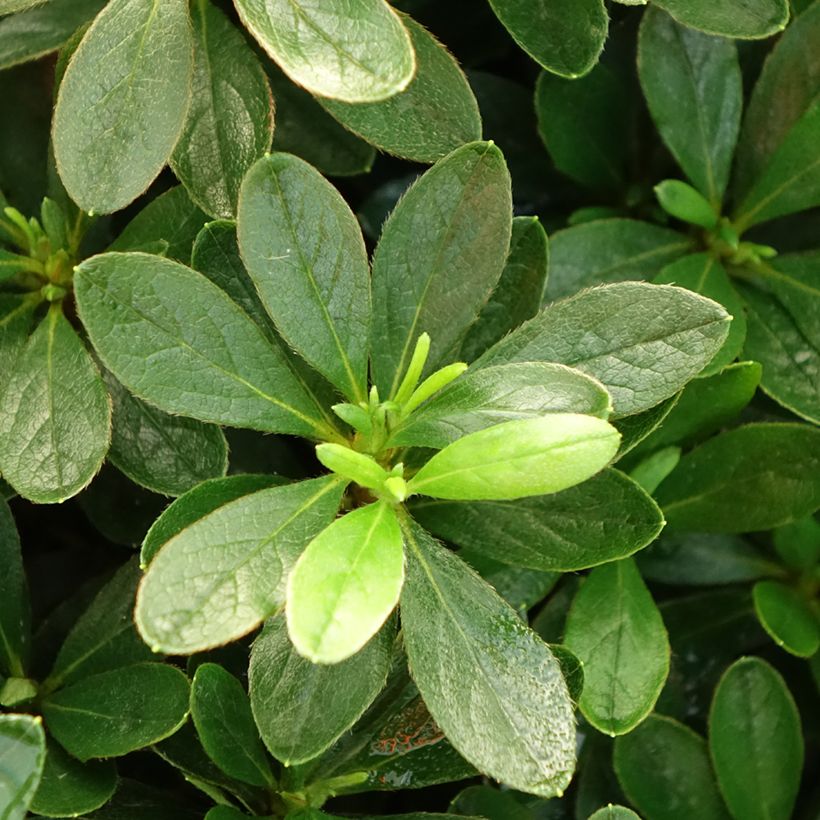

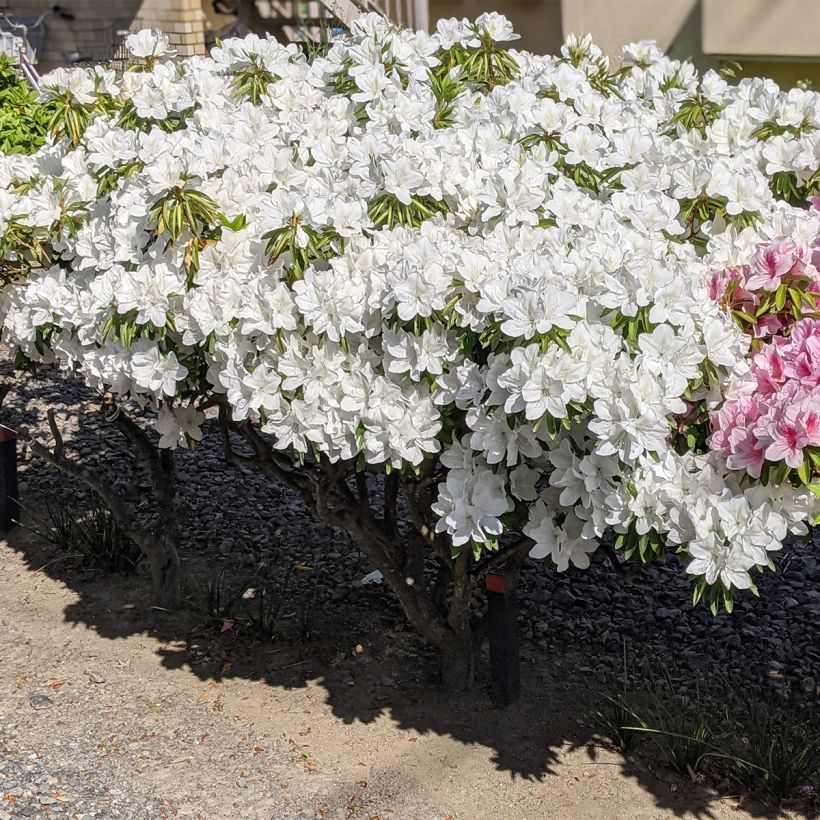

Plant habit
Flowering
Foliage
Botanical data
Rhododendron (Azalea)
Luzi
Ericaceae
Japanese Azalea
Cultivar or hybrid
Other Japanese Azalea
View all →Planting and care
Plant the Rhododendron 'Luzi' in a moderately sunny to semi-shady location, protected from cold, drying winds, in moist, humus-rich, light, acidic soil. Like all ericaceous, it does not tolerate chalky or heavy soils that are waterlogged in winter. Dig a hole three times larger than the pot. Soak the root ball in alkaline-free water and plant it level with the surface of the soil, in a mixture composed of 1/4 coir, leaf mould, horticultural grit or perlite, and loam. Water generously and keep the soil moist in summer.
Azaleas and Rhododendrons have a shallow root system. As a result, they are sensitive to long periods of drought. That is why a soil enriched with humus and generous watering during dry periods is recommended. In addition, this root system is not very strong, so it is essential to lighten heavy soils with free-draining materials (horticultural grit, clay pellets) when planting. Apply a mulch of shredded pine bark around the base of the shrub every spring to keep the soil moist while maintaining an acidic pH. Maintenance involves removing faded flowers in summer and clearing out dead branches. Azaleas and Rhododendrons can sometimes be attacked by weevils that eat the edges of leaves and rootlets, as well as the famous "Rhododendron lacebug", not often causing significant damage. Yellowing of the leaves (chlorosis) in rhododendrons indicates poor uptake of iron from the soil and can lead to the premature death of the plant. While chalk is often the cause, poorly drained soil or root balls planted too deeply can also explain the phenomenon.
Planting period
Intended location
Care
Planting & care advice
This item has not been reviewed yet - be the first to leave a review about it.
Haven't found what you were looking for?
Hardiness is the lowest winter temperature a plant can endure without suffering serious damage or even dying. However, hardiness is affected by location (a sheltered area, such as a patio), protection (winter cover) and soil type (hardiness is improved by well-drained soil).

Photo Sharing Terms & Conditions
In order to encourage gardeners to interact and share their experiences, Promesse de fleurs offers various media enabling content to be uploaded onto its Site - in particular via the ‘Photo sharing’ module.
The User agrees to refrain from:
- Posting any content that is illegal, prejudicial, insulting, racist, inciteful to hatred, revisionist, contrary to public decency, that infringes on privacy or on the privacy rights of third parties, in particular the publicity rights of persons and goods, intellectual property rights, or the right to privacy.
- Submitting content on behalf of a third party;
- Impersonate the identity of a third party and/or publish any personal information about a third party;
In general, the User undertakes to refrain from any unethical behaviour.
All Content (in particular text, comments, files, images, photos, videos, creative works, etc.), which may be subject to property or intellectual property rights, image or other private rights, shall remain the property of the User, subject to the limited rights granted by the terms of the licence granted by Promesse de fleurs as stated below. Users are at liberty to publish or not to publish such Content on the Site, notably via the ‘Photo Sharing’ facility, and accept that this Content shall be made public and freely accessible, notably on the Internet.
Users further acknowledge, undertake to have ,and guarantee that they hold all necessary rights and permissions to publish such material on the Site, in particular with regard to the legislation in force pertaining to any privacy, property, intellectual property, image, or contractual rights, or rights of any other nature. By publishing such Content on the Site, Users acknowledge accepting full liability as publishers of the Content within the meaning of the law, and grant Promesse de fleurs, free of charge, an inclusive, worldwide licence for the said Content for the entire duration of its publication, including all reproduction, representation, up/downloading, displaying, performing, transmission, and storage rights.
Users also grant permission for their name to be linked to the Content and accept that this link may not always be made available.
By engaging in posting material, Users consent to their Content becoming automatically accessible on the Internet, in particular on other sites and/or blogs and/or web pages of the Promesse de fleurs site, including in particular social pages and the Promesse de fleurs catalogue.
Users may secure the removal of entrusted content free of charge by issuing a simple request via our contact form.
The flowering period indicated on our website applies to countries and regions located in USDA zone 8 (France, the United Kingdom, Ireland, the Netherlands, etc.)
It will vary according to where you live:
- In zones 9 to 10 (Italy, Spain, Greece, etc.), flowering will occur about 2 to 4 weeks earlier.
- In zones 6 to 7 (Germany, Poland, Slovenia, and lower mountainous regions), flowering will be delayed by 2 to 3 weeks.
- In zone 5 (Central Europe, Scandinavia), blooming will be delayed by 3 to 5 weeks.
In temperate climates, pruning of spring-flowering shrubs (forsythia, spireas, etc.) should be done just after flowering.
Pruning of summer-flowering shrubs (Indian Lilac, Perovskia, etc.) can be done in winter or spring.
In cold regions as well as with frost-sensitive plants, avoid pruning too early when severe frosts may still occur.
The planting period indicated on our website applies to countries and regions located in USDA zone 8 (France, United Kingdom, Ireland, Netherlands).
It will vary according to where you live:
- In Mediterranean zones (Marseille, Madrid, Milan, etc.), autumn and winter are the best planting periods.
- In continental zones (Strasbourg, Munich, Vienna, etc.), delay planting by 2 to 3 weeks in spring and bring it forward by 2 to 4 weeks in autumn.
- In mountainous regions (the Alps, Pyrenees, Carpathians, etc.), it is best to plant in late spring (May-June) or late summer (August-September).
The harvesting period indicated on our website applies to countries and regions in USDA zone 8 (France, England, Ireland, the Netherlands).
In colder areas (Scandinavia, Poland, Austria...) fruit and vegetable harvests are likely to be delayed by 3-4 weeks.
In warmer areas (Italy, Spain, Greece, etc.), harvesting will probably take place earlier, depending on weather conditions.
The sowing periods indicated on our website apply to countries and regions within USDA Zone 8 (France, UK, Ireland, Netherlands).
In colder areas (Scandinavia, Poland, Austria...), delay any outdoor sowing by 3-4 weeks, or sow under glass.
In warmer climes (Italy, Spain, Greece, etc.), bring outdoor sowing forward by a few weeks.






























